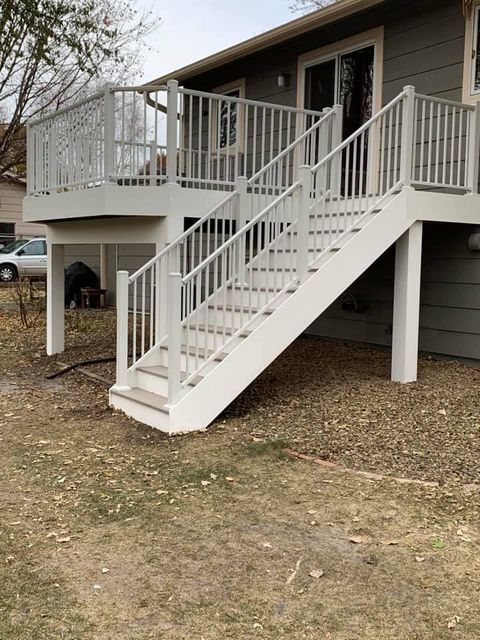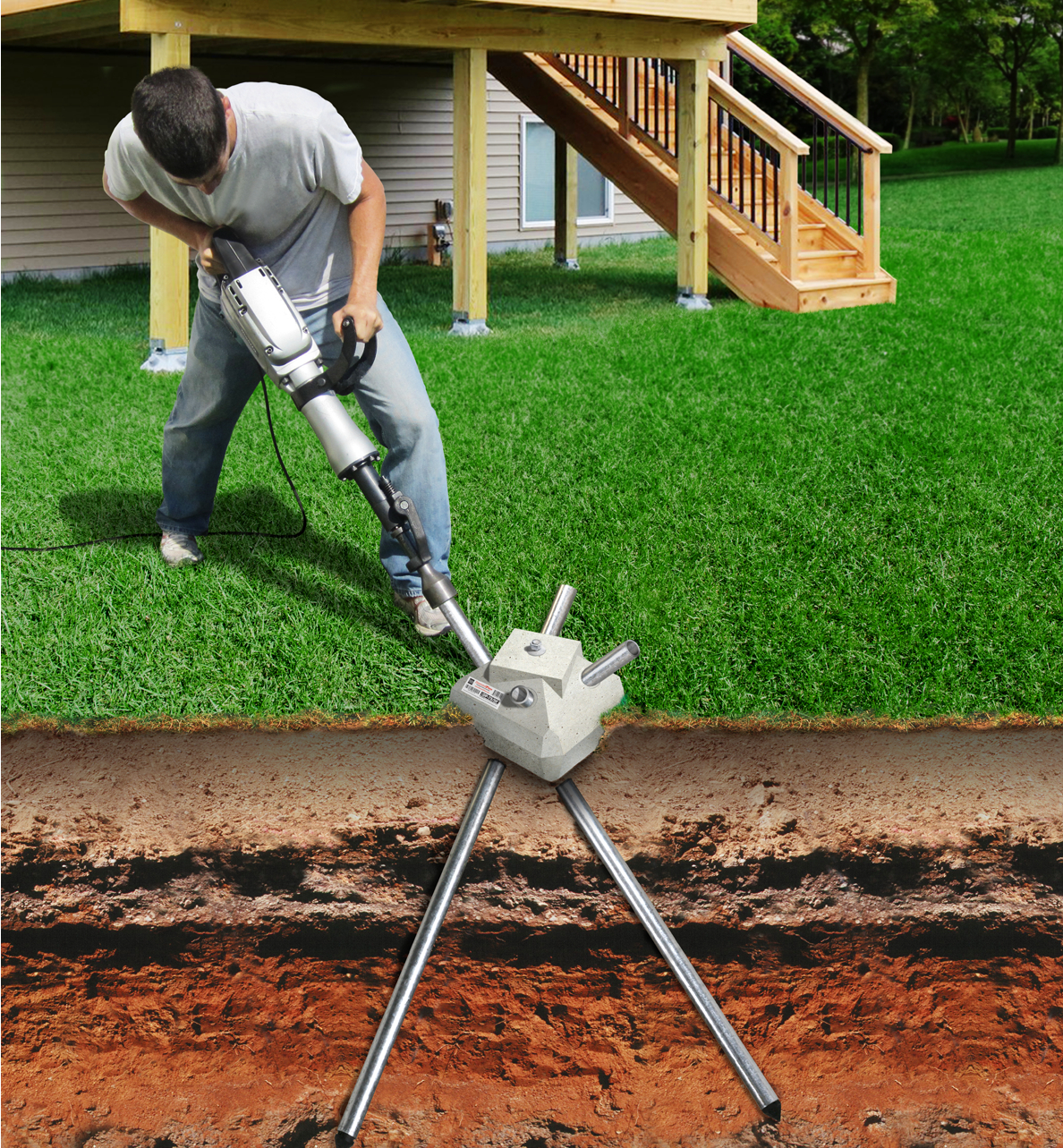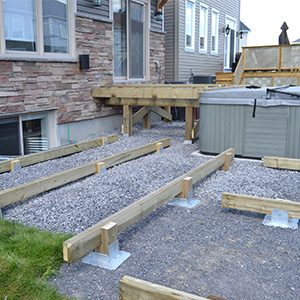Guarantee Security and Longevity With Properly Set Up Deck Grounds
Deck grounds might not be the most glamorous facet of deck building and construction, but they play an important role in making sure security and durability. In this discussion, we will check out the value of proper deck footings, factors to consider throughout installation, different types of footings offered, detailed installment overview, and upkeep suggestions for ensuring lasting footings.

Significance of Correct Deck Grounds
Why are appropriately set up deck grounds critical for the security and longevity of your deck? Deck grounds are the foundation on which the deck rests, moving the lots from the deck to the ground.
To start with, effectively installed deck grounds distribute the weight of the deck equally, preventing any type of irregular settling or sinking. This is particularly essential in locations with unsteady soil, as it helps to reduce the danger of the deck collapsing or shifting. In addition, well-installed footings guarantee that the deck remains level, avoiding any kind of structural damage that can happen when a deck ends up being irregular.
Second of all, effectively installed grounds provide a strong support for the deck, stopping too much motion and guide. This helps to keep the structural integrity of the deck, reducing the risk of crashes or injuries. It likewise minimizes the wear and tear on the deck, enabling it to hold up against the components and routine use for a longer time period.
Variables to Consider for Deck Footing Installation
When setting up deck footings, there are numerous essential elements to take into consideration for appropriate installation. Various soil types have various load-bearing capabilities, so it is essential to conduct a soil examination to ensure the footings can support the weight of the deck and its occupants. By taking right into account these aspects, you can make certain the correct installation of deck footings and enjoy a durable and stable deck.
Sorts Of Deck Footings to Select From
There are several different types of deck footings available for you to pick from. Each type has its own advantages and downsides, so it's important to consider your certain demands and the conditions of your deck prior to making a decision.
One typical kind of deck ground is the concrete footing. This includes excavating holes in the ground and pouring concrete right into them to create a solid structure. Concrete grounds are sturdy and supply outstanding stability, making them suitable for decks in locations with difficult soil conditions or high wind loads.
An additional choice is the helical pier footing, which includes a steel shaft with helical plates that are screwed into the ground. These footings are fast to set up and can be made use of in numerous dirt types, consisting of sandy or clay soils. They are additionally flexible, permitting easy leveling of the deck.
Sonotube grounds are an additional popular option. These grounds are produced by positioning a cardboard tube in a hole and loading it with my link concrete. Sonotube grounds are relatively easy to set up and supply adequate stability for smaller decks or in areas with less demanding soil conditions.

When selecting the sort of deck ground, it's essential to take into consideration variables such as dirt conditions, deck dimension and weight, regional building regulations, and personal choices. By selecting the suitable footing kind, you can make certain the stability and durability of your deck.
Step-by-Step Guide for Setting Up Deck Footings

Determine the place: Begin by noting the precise placement of each footing utilizing risks and string (Deck Footings). Think about any neighborhood building codes or policies concerning setback distances
Dig the holes: Utilize a blog post opening digger or an auger to dig the openings for the grounds. Usually, a deepness of at the very least 36 inches is advised for stability.
Level the holes: Guarantee that the bottoms of the openings are degree (Deck Footings). This can be attained by utilizing a degree or a straight board across the top of the holes
Add gravel: Location a layer of gravel at the base of each opening to enhance drainage and prevent the ground from penetrating the dirt with time.
Place the ground kinds: Insert the footing develops right into the holes, ensuring they are focused and degree. Usage risks to secure them in position.
Mix and pour concrete: Adhere to the instructions Web Site on the concrete mix bag to prepare the concrete. Pour the concrete right into the ground types, filling them completely.
Smooth the surface: Utilize a trowel to smooth the surface area of the concrete and get rid of any air pockets. Permit the concrete to heal according to the producer's guidelines.
Upkeep Tips for Lasting Deck Footings
Correct upkeep is critical for guaranteeing the long life and stability of deck grounds. By routinely examining and keeping your deck grounds, you can protect against damages and possible safety and security dangers.
Normal cleaning is likewise important for maintaining deck grounds. Particles, dust, and greenery can collect around the grounds, which can lead to moisture accumulation and degeneration. Cleaning the footings on a regular basis, using a brush or a pressure washer, can aid avoid these concerns and expand the life-span of your deck.
In addition to cleansing, it is essential to keep the location around the footings free from any type of blockages. Prevent stacking products versus the grounds or permitting plants to expand also close to them. These blockages can catch wetness and trigger the grounds to deteriorate in time.
Last but not least, routine resealing of the footings is advised to secure them from moisture and various other environmental elements. Applying a waterproof sealant can aid avoid water damage and expand the lifespan of the grounds.
Verdict
Finally, proper installation of deck grounds is vital great post to read for guaranteeing stability and durability of your deck. Aspects such as soil kind, tons capacity, and local building codes need to be considered when choosing the appropriate kind of deck grounds. Adhering to a detailed overview for installment and regular upkeep will certainly assist to make certain the footings continue to be durable and resilient.
In this discussion, we will certainly discover the importance of correct deck footings, elements to think about during installation, different kinds of grounds available, detailed setup overview, and maintenance suggestions for making certain long-lasting grounds. Deck grounds are the foundation on which the deck relaxes, transferring the lots from the deck to the ground.One common kind of deck footing is the concrete ground. Insert the ground types: Put the ground creates into the holes, guaranteeing they are centered and level.In conclusion, appropriate setup of deck grounds is important for making sure stability and longevity of your deck.
Comments on “Deck Footings Introduced: Comprehending the Trick Parts of a Reputable Deck Framework”